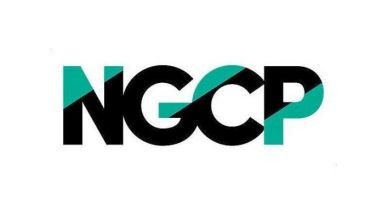Peso weakens on ratings downgrade
April 26, 2003 | 12:00am
The peso tumbled sharply against the dollar yesterday following the decision of global ratings agency Standard & Poor’s to downgrade the country’s long-term credit rating due to government’s growing debt burden and fiscal deficit.
At the Philippine Dealing System (PDS), the peso plunged by 25.5 centavos to close at 53.050 yesterday, a level not seen since April 8, against the previous day’s close of 52.795 to the dollar.
The peso opened at 52.95 to the dollar before hitting a high of 52.930 to $1. Total trades amounted to $119 million, indicating the strong volume of dollar purchases.
Bangko Sentral ng Pilipinas (BSP) Deputy Governor Amando Tetangco Jr., however, declined to give any comment when asked whether the BSP intervened in the market or not.
"The factors were end-month’s requirements, weaker regionals, and the reaction to the downgrade," Tetangco said.
Dealers said the BSP was capping the peso’s decline, selling dollars from around 52.95 to the greenback.
New York-based Standard & Poor’s downgraded its long-term credit rating on the Philippines from "BB+" to "B," prompted by the government’s growing debt burden and fiscal deficit which the credit rating agency said would remain high at five percent of gross domestic product (GDP).
S&P warned that a further downgrade is still imminent, especially if government fails to contain its yawning budget deficit, compounded by the expected increase in debt burden which could result from the weakening of the peso against the dollar.
Government economists said the weakening of the peso yesterday was attributable to the increase in the demand for dollars as corporate dollar users bought up their end-of-the-month requirements.
Tetangco said most regional currencies were also weak and the general sentiments were tracked by the local currency.
However, Tetangco admitted that the S&P downgrade also had an effect but the negative sentiment would settle down eventually as the market comes to terms with the S&P move and discounts the lower credit rating.
Meanwhile, data from the BSP showed that the country’s net foreign portfolio investments took a sharp drop to $31.2 million from January to April 19 compared with last year’s $62.3 million.
The weekly portfolio inflows are expected to look even worse in the final week of the month ending April 26, since business was closed for the Lenten Week.
On a year-to-date basis, total foreign portfolio inflows amounted to $53.8 million, down from $197.5 million last year. Outflows, on the other hand, amounted to $22.6 million, leaving only $31.2 million in net inflows.
At the Philippine Dealing System (PDS), the peso plunged by 25.5 centavos to close at 53.050 yesterday, a level not seen since April 8, against the previous day’s close of 52.795 to the dollar.
The peso opened at 52.95 to the dollar before hitting a high of 52.930 to $1. Total trades amounted to $119 million, indicating the strong volume of dollar purchases.
Bangko Sentral ng Pilipinas (BSP) Deputy Governor Amando Tetangco Jr., however, declined to give any comment when asked whether the BSP intervened in the market or not.
"The factors were end-month’s requirements, weaker regionals, and the reaction to the downgrade," Tetangco said.
Dealers said the BSP was capping the peso’s decline, selling dollars from around 52.95 to the greenback.
New York-based Standard & Poor’s downgraded its long-term credit rating on the Philippines from "BB+" to "B," prompted by the government’s growing debt burden and fiscal deficit which the credit rating agency said would remain high at five percent of gross domestic product (GDP).
S&P warned that a further downgrade is still imminent, especially if government fails to contain its yawning budget deficit, compounded by the expected increase in debt burden which could result from the weakening of the peso against the dollar.
Government economists said the weakening of the peso yesterday was attributable to the increase in the demand for dollars as corporate dollar users bought up their end-of-the-month requirements.
Tetangco said most regional currencies were also weak and the general sentiments were tracked by the local currency.
However, Tetangco admitted that the S&P downgrade also had an effect but the negative sentiment would settle down eventually as the market comes to terms with the S&P move and discounts the lower credit rating.
Meanwhile, data from the BSP showed that the country’s net foreign portfolio investments took a sharp drop to $31.2 million from January to April 19 compared with last year’s $62.3 million.
The weekly portfolio inflows are expected to look even worse in the final week of the month ending April 26, since business was closed for the Lenten Week.
On a year-to-date basis, total foreign portfolio inflows amounted to $53.8 million, down from $197.5 million last year. Outflows, on the other hand, amounted to $22.6 million, leaving only $31.2 million in net inflows.
BrandSpace Articles
<
>
- Latest
- Trending
Trending
Latest
Trending
Latest
Recommended




























